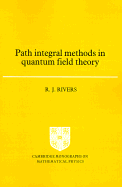Book contents
- Frontmatter
- Contents
- Preface
- 1 Scalar Green functions and their perturbative solutions
- 2 Connected Green functions and their one-particle irreducible components
- 3 Regularisation and renormalisation
- 4 The scalar functional integral
- 5 Series expansions and their summation
- 6 Taking the path integral more seriously
- 7 Quantum theory on non-simply-connected configuration spaces
- 8 Stochastic quantisation
- 9 Fermions
- 10 Quantum electrodynamics
- 11 Non-Abelian gauge theories
- 12 Explicit symmetry breaking and its classical limit
- 13 The effective potential
- 14 Field theory at non-zero temperature
- 15 Field theory at non-zero temperature: real-time formulation
- 16 Instantons
- 17 Composite fields and the large-N limit
- References
- Index
- Frontmatter
- Contents
- Preface
- 1 Scalar Green functions and their perturbative solutions
- 2 Connected Green functions and their one-particle irreducible components
- 3 Regularisation and renormalisation
- 4 The scalar functional integral
- 5 Series expansions and their summation
- 6 Taking the path integral more seriously
- 7 Quantum theory on non-simply-connected configuration spaces
- 8 Stochastic quantisation
- 9 Fermions
- 10 Quantum electrodynamics
- 11 Non-Abelian gauge theories
- 12 Explicit symmetry breaking and its classical limit
- 13 The effective potential
- 14 Field theory at non-zero temperature
- 15 Field theory at non-zero temperature: real-time formulation
- 16 Instantons
- 17 Composite fields and the large-N limit
- References
- Index
Summary
The functional approach that was adopted in the earlier sections for the scalar theory had two principal aims. The first was to write down equations (the Dyson–Schwinger equations) for the Green functions that were a consequence of canonical quantisation and directly reflected the nature of the particle interactions. The second was to find a reliable integral realisation for the generating functional Z[j] that manifestly satisfied these equations and thus embodied canonical quantisation. The integral form itself then suggested tactics for understanding the theory.
Both of these steps are essentially combinatoric and permit direct generalisation to more realistic theories. As a first move towards realism we shall sketch the extension of these ideas to Fermi fields. We face two separate problems. The first, and most important, is that of the need to accommodate Fermi statistics in the formalism. This will be our main task in this chapter. Secondly, we need to describe internal spin degrees of freedom, and for this we need n > 2 dimensions. Contemporary models often begin classically in large numbers of spatial dimensions. With immediate realism in mind, we are mainly interested in n = 4 dimensions from the start. (Whereas for scalar fields n = 4 dimensions was pathological in that quantum fluctuations were most likely to completely screen the bare charge g0, the argument does not naturally extend to Fermi fields (with scalars).)
- Type
- Chapter
- Information
- Path Integral Methods in Quantum Field Theory , pp. 159 - 179Publisher: Cambridge University PressPrint publication year: 1987

